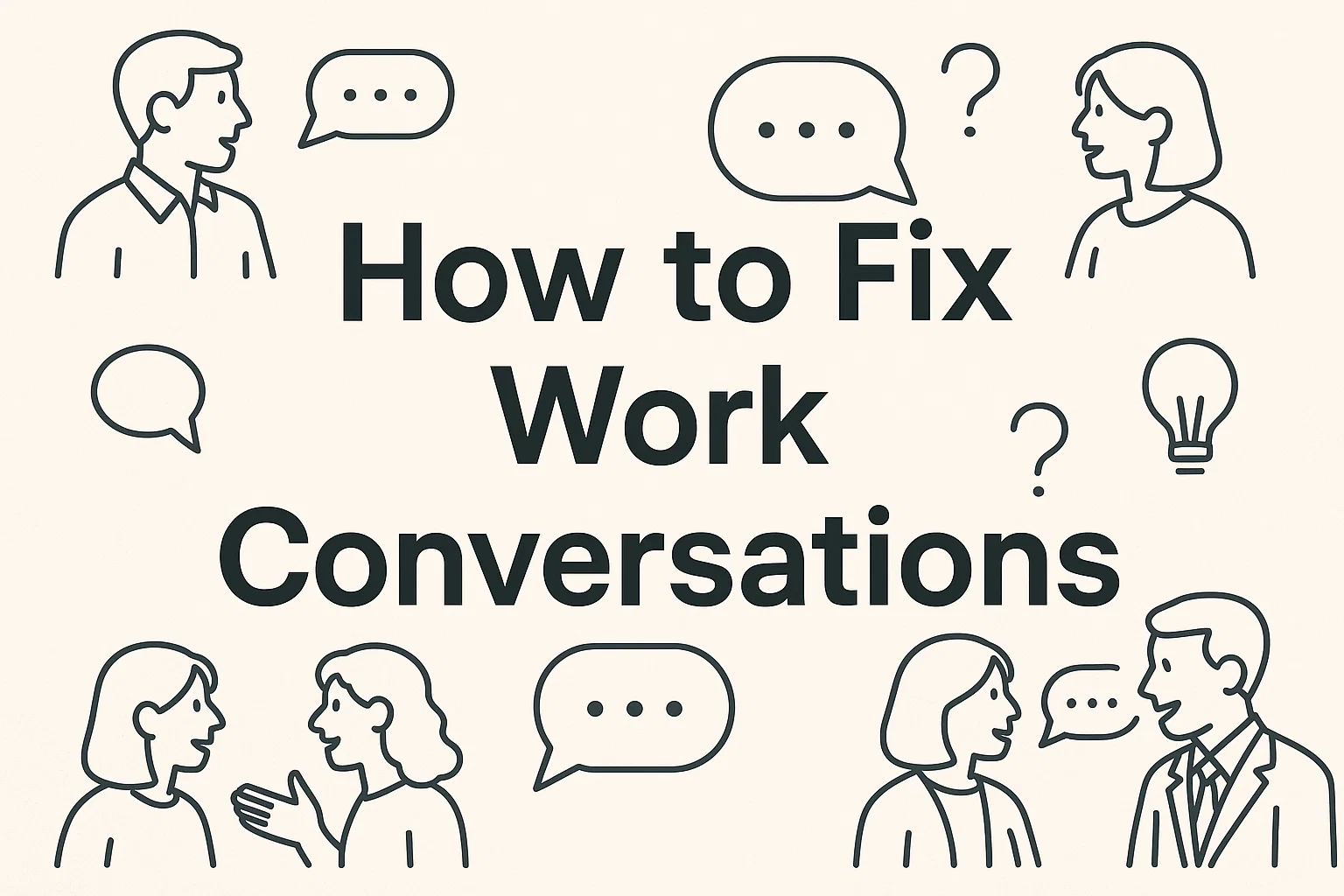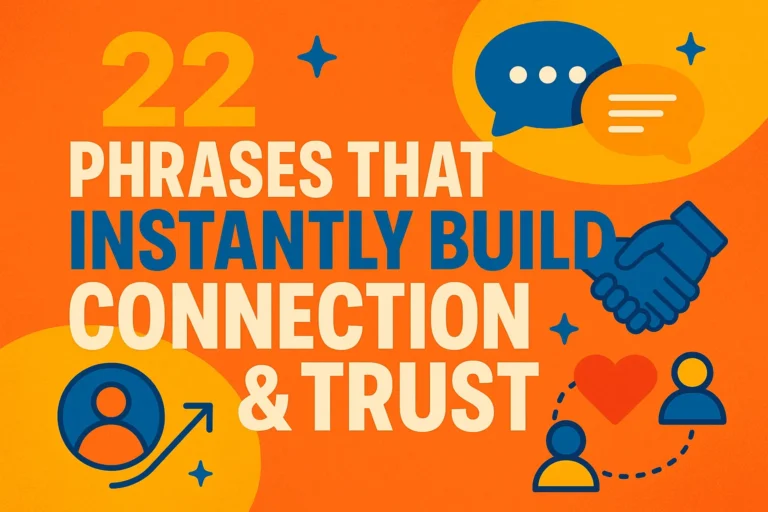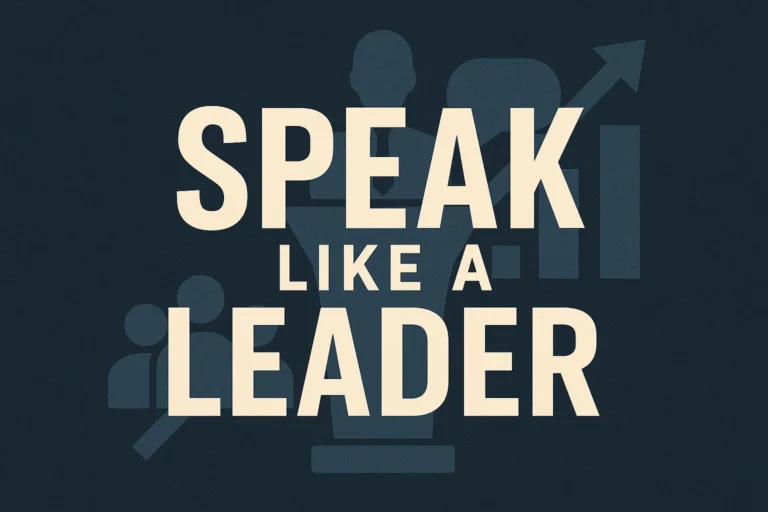How to Fix Work Conversations Essential Communication Skills for Success
How to Fix Work Conversations: Essential Communication Skills for Success
Let’s be real—work conversations can be painful. Ever been stuck in a meeting where someone drones on for 20 minutes just to say, “We should maybe think about possibly considering a new strategy… perhaps?” Or worse, had a coworker misinterpret your email and suddenly you’re in a passive-aggressive Slack war?
Yeah, we’ve all been there.
The good news? Fixing work conversations isn’t rocket science. It’s about clear, confident, and intentional communication. Whether you’re pitching an idea, giving feedback, or just trying to get through a Monday stand-up without wanting to scream into your coffee, these essential skills will save you.
So, let’s break it down—no corporate jargon, no fluff, just real talk on how to make work conversations actually work.
1. Stop Sounding Like a Robot (Seriously, Just Talk Like a Human)
Ever read an email that felt like it was written by an AI trained on corporate buzzwords? “Per my last communication, let’s leverage synergies to optimize our deliverables.” Ugh.
Here’s the thing: People respond better to humans, not walking PowerPoint slides.
How to Fix It:
- Drop the jargon. Say “Let’s work together” instead of “Let’s collaborate synergistically.”
- Use contractions. “I’m” instead of “I am” makes you sound less like a corporate cyborg.
- Ask questions like a normal person. Instead of “Please advise,” try “What do you think?”
Pro tip: If your sentence sounds like it belongs in a 1990s business textbook, rewrite it.
2. Listen More Than You Talk (Shocking, I Know)
We’ve all worked with that person—the one who monologues in meetings like they’re auditioning for a TED Talk. Spoiler: Nobody likes that person.
Good communication isn’t about talking—it’s about listening.
How to Actually Listen:
- Stop planning your response while the other person is talking. (Guilty? Yeah, me too.)
- Nod, make eye contact, and give small verbal cues (“Got it,” “Makes sense”) to show you’re engaged.
- Repeat back key points to confirm understanding. “So what you’re saying is…”
FYI, people will like you more if they feel heard. And hey, you might even learn something.
3. Master the Art of the Clear Ask
Raise your hand if you’ve ever sent an email that said, “Let me know your thoughts!” and then got zero response.
Vague requests = vague results.
How to Get What You Want:
- Be specific. Instead of “Thoughts?” try “Can you review this doc by Friday and let me know if we need any changes?”
- Set deadlines. “I need this by EOD Tuesday” works better than “Whenever you get a chance.”
- Explain the why. “This helps us stay on track for the client meeting” gives context.
Bonus: You’ll spend less time chasing people down.
4. Handle Tough Conversations Without Starting a War
Giving feedback, saying no, or addressing a conflict? These conversations can feel like walking through a minefield. But they don’t have to.
The Non-Awkward Way to Deal With Conflict:
- Use “I” statements. “I felt confused when…” instead of “You never explain things clearly.”
- Focus on the issue, not the person. “This process isn’t working” > “You’re bad at this.”
- Offer solutions. Don’t just complain—suggest a fix.
And if things get heated? Take a breather. “Let’s revisit this in 10 minutes” is better than a shouting match.
5. Email & Messaging That Doesn’t Make People Groan
Let’s face it—most work messages are too long, too vague, or just plain annoying.
How to Write Better Messages:
- Subject lines that matter. “Action Needed: Approve Budget by 3 PM” > “Quick Question”
- Front-load the important stuff. Don’t bury the ask in paragraph four.
- Emojis? Maybe one. A single 👍 can soften tone, but don’t turn it into a text message.
IMO, if your email looks like a novel, trim it down.
6. Body Language: The Secret Weapon
You could say all the right words, but if your arms are crossed and you’re scowling, good luck getting anyone to listen.
Quick Body Language Fixes:
- Uncross your arms. (Yes, even in Zoom meetings.)
- Lean in slightly to show engagement.
- Match your tone to your message. Excited? Sound like it. Serious? Drop the sarcasm.
Fun fact: People decide if they trust you in seconds based on body language. So yeah, it matters.
Final Thought: Just Be Human
At the end of the day, work conversations are just… conversations. The more you treat them like real human interactions (instead of stiff, formal exchanges), the better they’ll go.
So next time you’re about to send that overly polite, jargon-filled email—stop. Take a breath. And just talk.
Your coworkers (and your sanity) will thank you.
Now go forth and communicate like a pro. Or at least, not like a corporate robot. 😉







